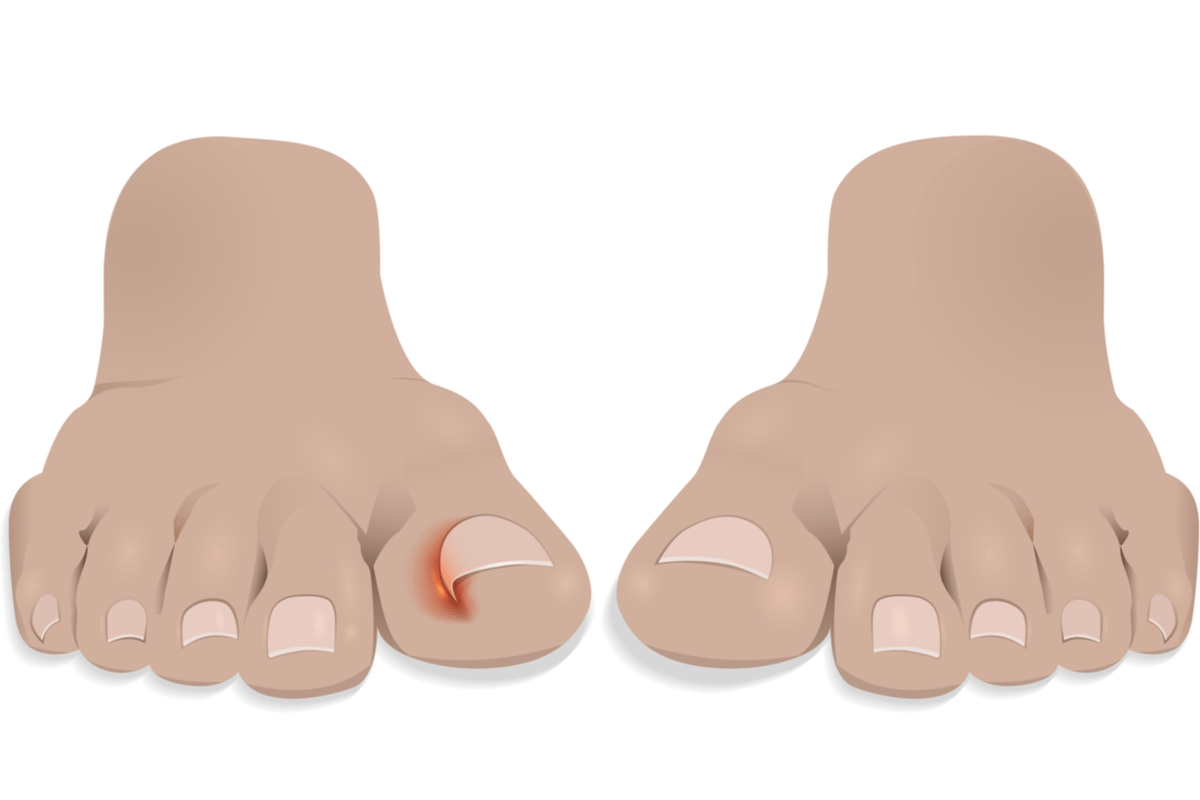An ingrown toenail can affect people of any age, including both men and women.

Image Credit: Sezer33 / Shutterstock.com
Ingrown toenails usually occur when a sharp corner or a toenail grows into the surrounding skin, which can be caused by various factors such as:
- Incorrect cutting
- Irregular shape
- Ill-fitting footwear
- Foot hygiene
- Toenail thickening
In some cases, there is no definite cause for the ingrown toenail, which is known as idiopathic. The most common causes of the condition are described in more detail below.
Incorrect cutting
Cutting the toenail incorrectly can increase the risk that the nail will grow into the skin and become ingrown. When cutting toenails, it is best to cut straight across rather than curving around the sides, as it helps to prevent the nails from becoming lodged in the skin. Cutting the nails too short should also be avoided, and picking or tearing at the corners of the toenails can also cause them to become ingrown.
Irregular nail shape
Curved toenails are most likely to grow into the skin and cause problems. Some people naturally have irregular and/or curved toenails that grow downward towards the skin and are therefore more likely to get ingrown toenails.
People may also have large toenails that are more likely to be injured and result in an ingrown toenail.
Ill-fitting footwear
Whenever extra pressure is placed on the toe and causes the nail to push into the surrounding skin, there is an increased risk of an ingrown toenail.
Some footwear that places excessive pressure on the big toe can press the toenail into the surrounding skin and cause an ingrown toenail. In particular, shoes that are high-heeled, too tight, narrow, or flat for the feet are likely to cause problems. Correctly fitted footwear is essential during sporting activities that place pressure on the feet, as shoes that are even slightly too tight may lead to an ingrown toenail.
Foot hygiene
Poor foot hygiene can also contribute to the development of ingrown toenails. Active people that are involved in sporting activities are prone to the condition due to increased risk of injury to the area, as well as an increase in the amount of sweating by their feet. Teenagers are more likely to be affected by ingrown toenails, which is believed to be associated with increased feet sweating.
For this reason, it is important to keep nails clean and examine them regularly for changes that could indicate the beginning of an ingrown nail so that the appropriate action can be taken.
Toenail thickening
Thickening of the toenail can increase the likelihood that the nail will grow into the skin and become ingrown. This can occur as a result of a fungal infection of the nail or due to certain medications, such as isotretinoin.
Elderly people are at an increased risk of getting ingrown toenails, which is likely to be a result of the naturally thickening of the toenails with age. Poor eyesight may also be a contributing factor, as it can increase the difficulty of properly trimming nails and recognizing the early signs of problems.
References
Further Reading